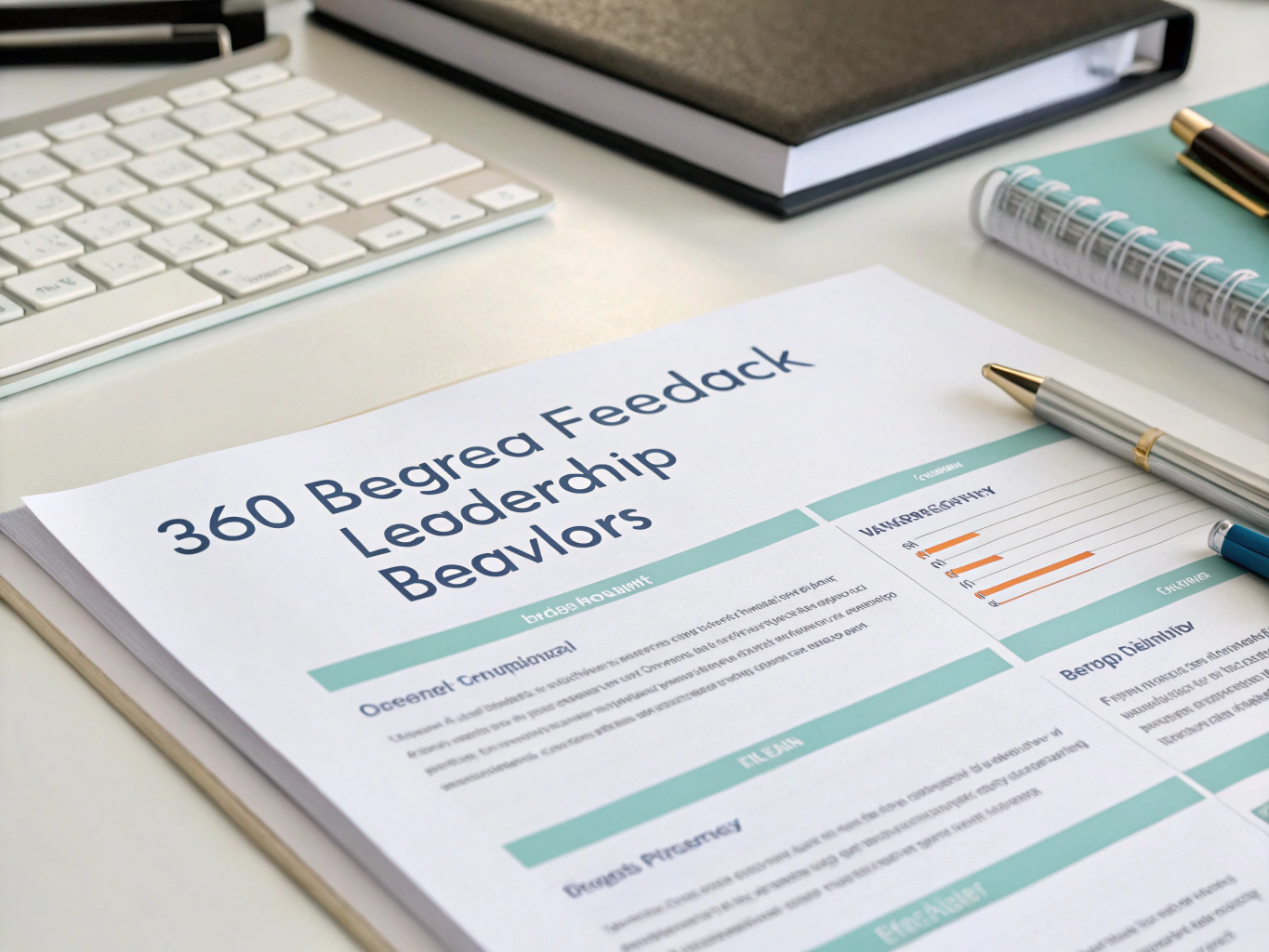What is a 360 Degree Feedback Leadership Behaviors?
The 360-degree feedback method is a comprehensive evaluation tool used to assess leadership behaviors from multiple perspectives. This includes insights from supervisors, peers, and direct reports, providing a well-rounded view of a leader’s effectiveness. It’s an essential process in Human Resources that helps organizations identify strengths and areas for improvement in their leadership teams, ultimately fostering a culture of growth and accountability.
Template
Below is a template you can customize for your organization’s needs:
360-Degree Feedback Leadership Behaviors
Employee Information
Name: ___________________________
Position: ______________________
Department: ____________________
Date: ___________________________
Self-Assessment
Leadership Behavior
Rating
- [ ] 1 – Needs Improvement
- [ ] 2 – Fair
- [ ] 3 – Good
- [ ] 4 – Very Good
- [ ] 5 – Excellent
Comments: ___________________________
Leadership and Vision
Rating: [ ] [ ] [ ] [ ] [ ]
Comments: ___________________________
Communication Skills
Rating: [ ] [ ] [ ] [ ] [ ]
Comments: ___________________________
Decision-Making
Rating: [ ] [ ] [ ] [ ] [ ]
Comments: ___________________________
Team Collaboration
Rating: [ ] [ ] [ ] [ ] [ ]
Comments: ___________________________
Conflict Resolution
Rating: [ ] [ ] [ ] [ ] [ ]
Comments: ___________________________
Peer Feedback
Feedback from Direct Reports
Additional Comments
Please provide any additional comments or suggestions for [Employee Name]’s leadership development:
____________________________
Purpose and Benefits
The purpose of the 360-degree feedback process is to enhance leadership effectiveness by gathering diverse insights. This form serves as a catalyst for personal and professional growth by illuminating areas for development.
- Enhanced Self-Awareness: Leaders gain a clearer picture of how their behaviors impact team dynamics.
- Targeted Development Opportunities: Specific feedback allows leaders to focus on skill enhancement critical for their role.
- Improved Communication: Feedback fosters open dialogue, enhancing collaboration and team cohesion.
- Accountability: Leaders are more likely to take ownership of their growth when provided with objective feedback.
Essential Components
Including the right elements in your feedback form is crucial for its effectiveness:
- Clear Rating Scale: A defined rating system (e.g., 1-5) allows for standardized evaluations.
- Comments Section: Open-ended feedback provides context to numerical ratings, offering deeper insights.
- Self-Assessment: Encouraging leaders to assess their own behaviors fosters reflection and ownership.
- Multiple Perspectives: Feedback from peers and direct reports ensures a holistic view of performance.
How to Use This Form
To maximize the effectiveness of the 360-degree feedback form, consider the following practical tips:
- Communicate Purpose: Ensure that all participants understand the goals of the feedback process.
- Maintain Confidentiality: Keep responses anonymous to encourage honest and candid feedback.
- Provide Support: Offer coaching or resources to help leaders interpret and act on the feedback received.
- Set a Timeline: Establish deadlines for feedback submission to keep the process on track.
Legal and Compliance Considerations
When implementing a 360-degree feedback process, it is crucial to adhere to legal and compliance standards. Ensure that the process respects privacy rights and complies with applicable labor laws. Maintain confidentiality of the feedback to protect the identities of respondents.
Best Practices
To ensure the 360-degree feedback process is effective and constructive, follow these best practices:
- Pilot the Process: Conduct a trial run with a small group to iron out any issues before a full rollout.
- Incorporate Feedback into Development Plans: Use the insights gathered to create personalized development plans for leaders.
- Follow Up: Schedule follow-up meetings to discuss feedback and progress, reinforcing accountability.
- Foster a Culture of Feedback: Encourage regular feedback exchanges to normalize constructive criticism and growth.




